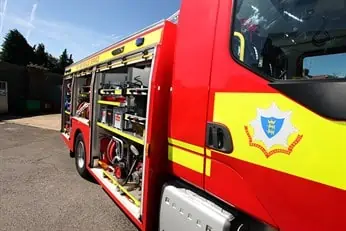Royal Berkshire Fire Authority has invested in new tablet devices and software to assist firefighters in providing the best possible response to the people of Royal Berkshire.
The Mobile Data Terminals (MDTs) have been fitted in the front of every fire engine across Berkshire to provide relevant operational intelligence and risk information to crews.

The Dell Latitude tablet device will be used to mobilise the crew/s and provide vital information on the way to an emergency. Royal Berkshire Fire and Rescue Service (RBFRS) is one of the first fire and rescue service’s to use Dell hardware and Airbus software together to create this innovative solution.
The system will send live status updates to the control room and other operational crews that are on their way or already at an incident. It will also give additional safety data, for example: chemicals stored on site, details on the occupancy of the premises, mapping details, which includes street and road names, as well as the location of other RBFRS resources.
Councillor Angus Ross, Strategic Asset Lead Member for Royal Berkshire Fire Authority, said: “The Fire Authority has invested to change all the existing MDTs to this more agile device, which allows the crews instant access to information that is vital for rescues or firefighting.
“In addition, the MDTs also utilise the telecommunication system used when the fire engine is mobilised to an incident, meaning they can receive instant updates that can help the crew decide how to respond to an incident in advance of arrival, enabling them to work more efficiently and effectively.
“As well as providing a wealth of information that can support them on the way to and at an emergency, they can also now connect to Wi-Fi for system updates, providing technological advancements almost immediately and excellent value-for-money as previously, all updates had to be completed manually by one of RBFRS’ ICT Technicians.”
Gary Thomas, Senior Communications Technical Support Officer, who led the project, said: “The MDTs are a great development for the Service and our firefighters are already reaping the benefits.
“In the future, we see other big advantages for firefighters in being able to use the devices. This includes firefighters being given instant travel directions to an emergency from the moment of mobilisation, as well as, at a road traffic collision to identify important information about the safety features of a vehicle (such as airbags), so that they can quickly be turned off before releasing trapped passengers from the car. This will in turn, reduce the amount of technological devices that are stored on each fire engine.”